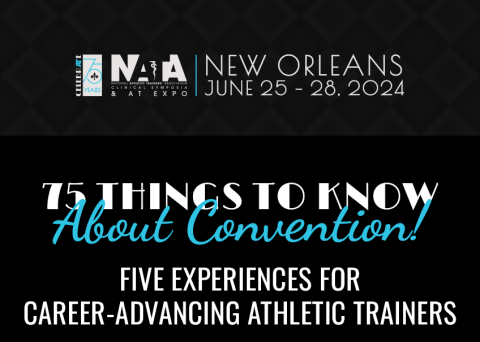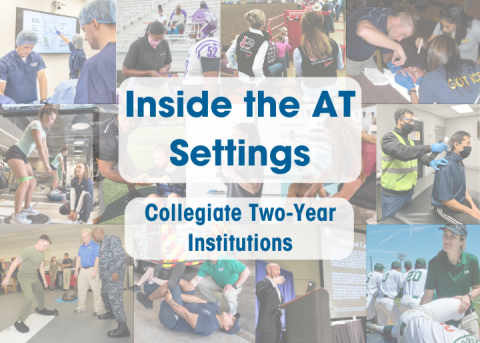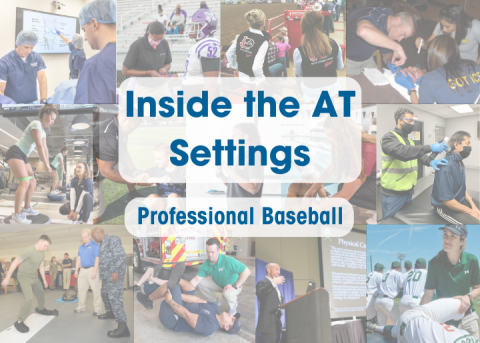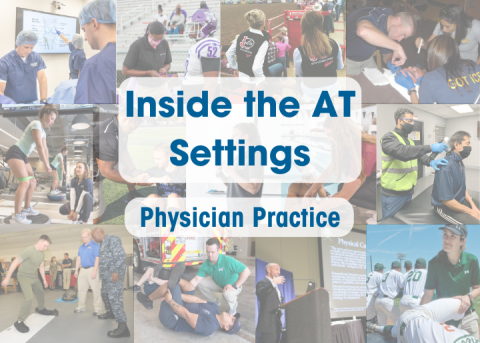
by Denise Alosa, MS, ATC
One of the most important work relationships you can foster as a secondary school athletic trainer is that of your local EMS team. You do not want the first time you meet your EMS squad to be while you are standing over an injured athlete. Take the time to connect with them regularly, and it will make those interactions on the field go smoothly.
When you make the decision to call EMS, there is a good reason, and that is that you need help for you and your athlete. It is important to understand that once they respond to your location, they must control the scene and care for the patient per their area protocol. This may not always align perfectly with what your training may have been. The EMS system is driven by medical direction and protocols set up by their area medical director, district and national standards. (http://www.ems.gov)
Take the time to understand the specific EMS group that responds to your site as the primary response. Be sure to know if it is a municipal agency with full-time paid EMS service, or a volunteer service or a private agency that covers your area. Each functions a bit differently from each other (it is beyond the scope of this article to explain each), so it is critical that you have an understanding of what system will be responding to your area.
Here are some ideas to help build your relationship with EMS.
Plan to meet yearly prior to preseason to discuss and review:
Changes in protocols: protocols for EMS as well as for AT’s change periodically. The process where you review and/or practice them with each other helps eliminate any questions on-site when an emergency arises. Resolve any conflict or procedural differences at this time.
Changes in State Law: the introduction of many state statutes affect how we practice today. This may include concussion management plans, sideline coverage, or practice acts to name a few. Both groups need to be sure they know and understand the state law as it pertains to them and to each other’s profession.
Emergency Action Plans: It is not only important to review your EAP with your EMS group, but to involve them in the creation of the plan. EMS will see things a bit differently, and think of things that you may have overlooked. Engage and involve them in your plan.
Invite them over to your facility: hold at least one of your meetings in your facility. It is important for them to know where you are located. Share with them what equipment you may have, how it works, and why you use different techniques or materials in your space.
Organize a skills session: this may be the most valuable thing you can do to develop a relationship with your EMS group. If you can schedule a regular skills session to demonstrate and practice specific skills and/or protocols, you will find that a great dialogue of give and take will happen. Once each group understands where each is coming from, the doors will open up. You may not always have perfect alignment of protocol, but this is the time to compromise and agree what will take place if the specific emergency situation arises. Some examples are:
Spine injured athlete: we are all aware of recent changes and recommendations made for both AT’s and EMS regarding prehospital care of the equipment-laden spine-injured athlete. This is a perfect opportunity to bring the two groups together to practice.
Exertional Heat Stroke: if your EAP includes treating an athlete in cold water immersion, it is critical that EMS understands this process. It is counter-intuitive to the EMS system to delay transport. However, we know that cool first, transport second saves lives. Be sure to have your EMS department on board with this procedure and that they understand why. Most EMS personnel have not been exposed to EHS, and therefore may not recognize it.
Immobilization of Extremities: share what equipment you like to use, and what they like to use. Knowing whether EMS prefers you to splint the injury prior to their arrival, or if do they prefer to do it is an important component in managing a significant extremity injury. Have the plan in place so there are no surprises.
Volunteer for a community athletic event where EMS is involved. This may be a local road race, a recreation athletic tournament, or a large scale event such as a marathon or triathlon. This will be one of the best PR items to include on your building relationships list. A community event where EMS may be assisting with medical coverage is the perfect setting to educate each other about your professions. It may be in the form of a formal presentation when preparing for the event coverage, or a casual conversation with each other in the field during down time. Introducing yourself to your assigned coverage squad and striking up a conversation will cover a lot of ground in a relaxed atmosphere.
Building a relationship with your local EMS department is critical to the functioning of your department. It may take some effort and time on your part, but it is well worth it in the end. This improved dialogue will make your job easier, and the care you give your athletes and families topnotch.





